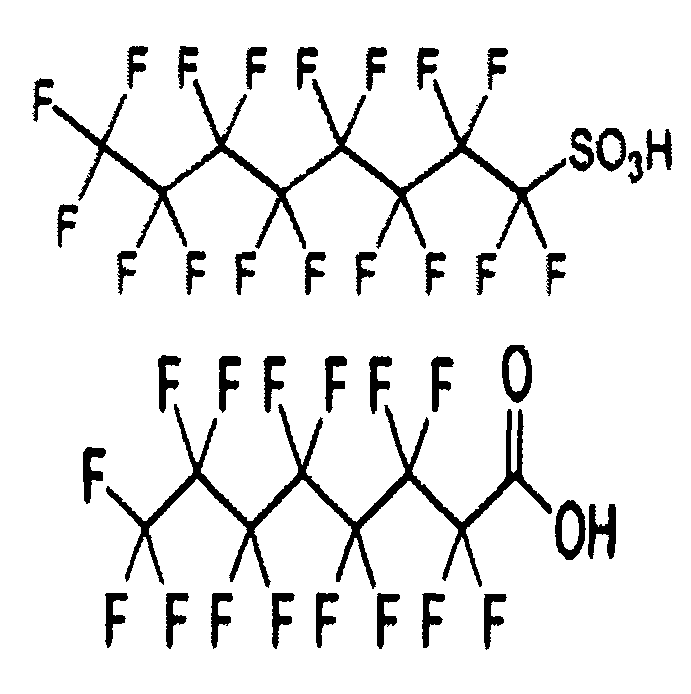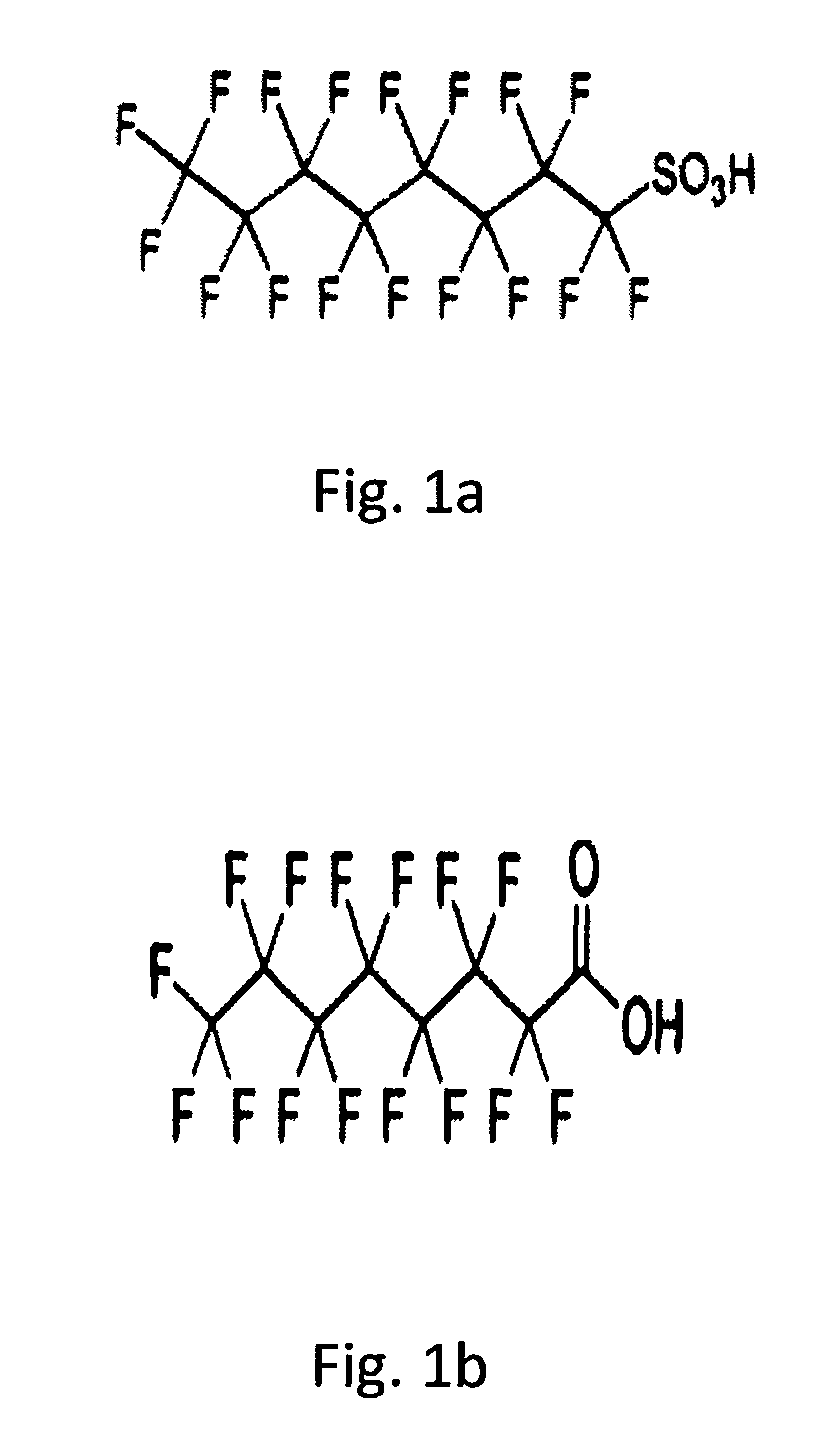Degrading halogenated organic compounds
a technology of organic compounds and halogenated compounds, applied in the field of degrading halogenated organic compounds, can solve the problems that prior art technologies were not successful in removing pfcs from the subsurface, and achieve the effect of eliminating environmental ‘stress’ and significantly reducing the amount or concentration
- Summary
- Abstract
- Description
- Claims
- Application Information
AI Technical Summary
Benefits of technology
Problems solved by technology
Method used
Image
Examples
examples
[0064]Samples comprising 250 g soil, 250 ml of water, 260 mg / l sodiumpermanganate, an amount of sodium peroxydisulfate and a mixture of PFOS and PFOA in known amounts (e.g., 20 ng / l-500 mg / l PFOS or PFOA), were prepared and allowed to react. After a defined period (2 weeks), the extent of degradation of PFOS and PFOA was measured. The samples had an initial concentration PFOS of 30000 ng / l and 5000 ng / l PFOA. It is noted that these concentrations are regarded as problematic levels at the site, and remedial targets will most likely need to be in the low ng / l range. Amounts of sodium peroxydisulfate used (% wt. / vol) and (averaged) percentages of PFOS and PFOA remaining in the samples are given in Table 1 below. Each sample was measured in duplicate.
[0065]
TABLE 1Number test:12340.5%1%2.5%5%PFC:Na2S2O8,Na2S2O8,Na2S2O8,Na2S2O8,MnMnMnMnPerfluoroctanesulfonic 24.616.217.3 5.4acid (PFOS)Perfluoroctanoic acid 49.441.037.920.5(PFOA)
[0066]As is evident form the table, effective degradation of ...
PUM
| Property | Measurement | Unit |
|---|---|---|
| temperature | aaaaa | aaaaa |
| temperature | aaaaa | aaaaa |
| pH | aaaaa | aaaaa |
Abstract
Description
Claims
Application Information
 Login to View More
Login to View More - R&D
- Intellectual Property
- Life Sciences
- Materials
- Tech Scout
- Unparalleled Data Quality
- Higher Quality Content
- 60% Fewer Hallucinations
Browse by: Latest US Patents, China's latest patents, Technical Efficacy Thesaurus, Application Domain, Technology Topic, Popular Technical Reports.
© 2025 PatSnap. All rights reserved.Legal|Privacy policy|Modern Slavery Act Transparency Statement|Sitemap|About US| Contact US: help@patsnap.com


